THE WARSAW INSTITUTE REVIEW
Date: 1 August 2018 Author: Piotr Kwiatkiewicz, Ph.D.
The dynamics of demographic changes in the Middle East and immigration to Europe
Population growth can be considered as one of the main underlying causes of human migration; however, the factor that is crucial here is the pace of this growth. Demographic estimations from the past give some insight into these dynamics.
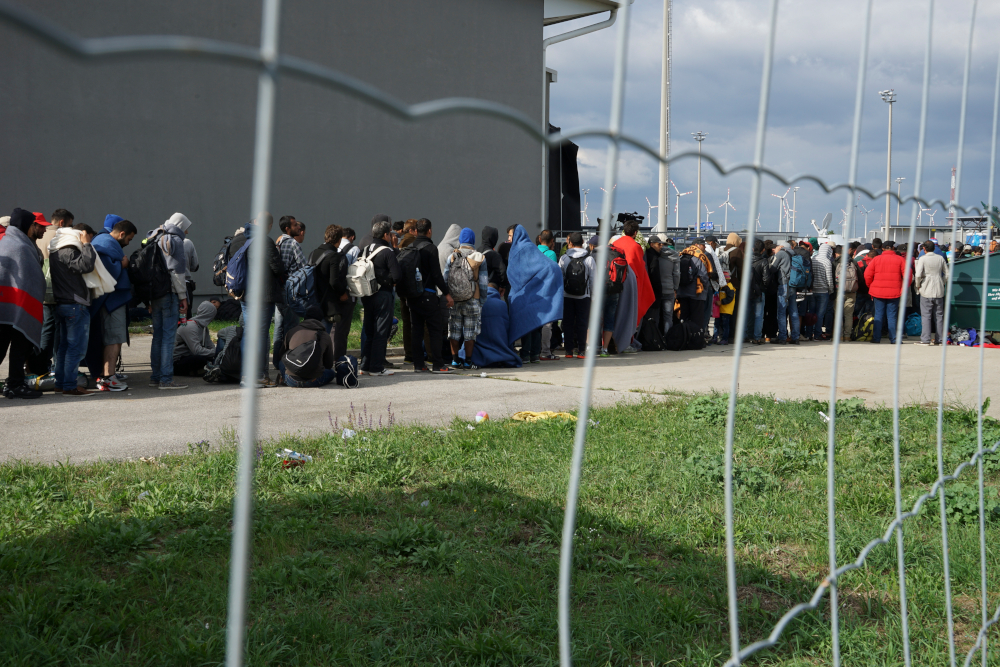 source: wikipedia.org
source: wikipedia.orgThe revolutionary transformations that are taking place in modern times are worth noting. What is interesting and worth emphasizing is that the first impulse for change in the current rate of natural growth came from Europe. Since 1700, Europe’s population has not needed even a century and a half to double in size; Asia was not much behind in this respect (see Table 2).
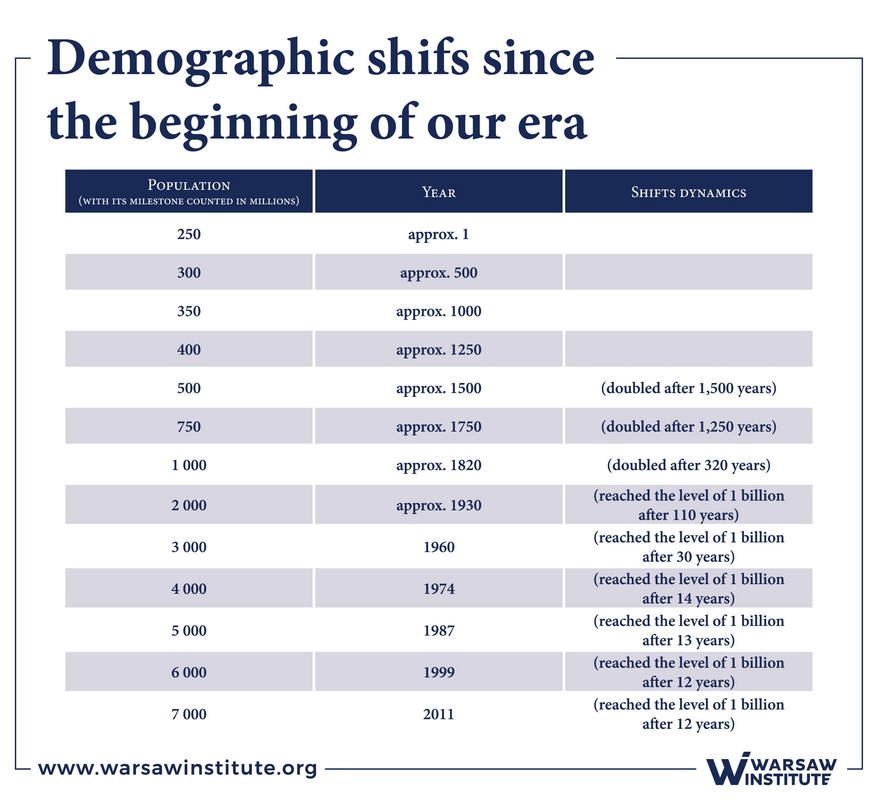 Table 1: The dynamics of demographic change since the beginning of our era.
Table 1: The dynamics of demographic change since the beginning of our era.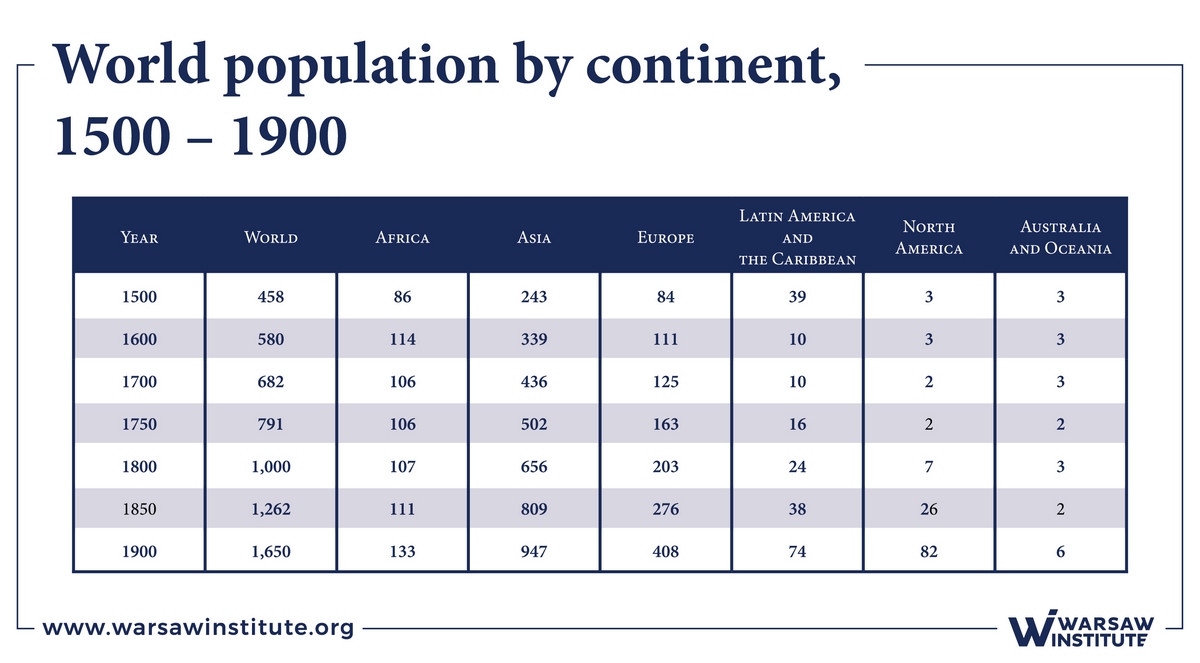 Table 2: World population by continents from the 16th to the 19th century.
Table 2: World population by continents from the 16th to the 19th century.However, the natural growth rate in the Old Continent was much higher than could be concluded from the historical data on the state of the population in Europe. It nominally doubled in the 19th century, but it is enough to look at the demographic changes in the New World to see the inaccuracy behind this figure. In the USA, the number of inhabitants increased eleven-fold in the analyzed period. It is not difficult to identify the causes of such a dynamic population growth: it was migration from Europe, which constituted the overwhelming majority of those who came to the continent. The same applies to both Americas and Australia. It is therefore necessary to include in the estimates also a large part of those who left the Old Continent. Europe’s population at the beginning and at the end of the century is not reliable material for establishing the difference between births and deaths in its area. As a result, it is with a high degree of probability that Europe, alongside the USA, can be identified as the parts of the world where population grew the fastest. The pace of these changes significantly outpaced the progress in agricultural production, forcing people to leave “to earn a crust”
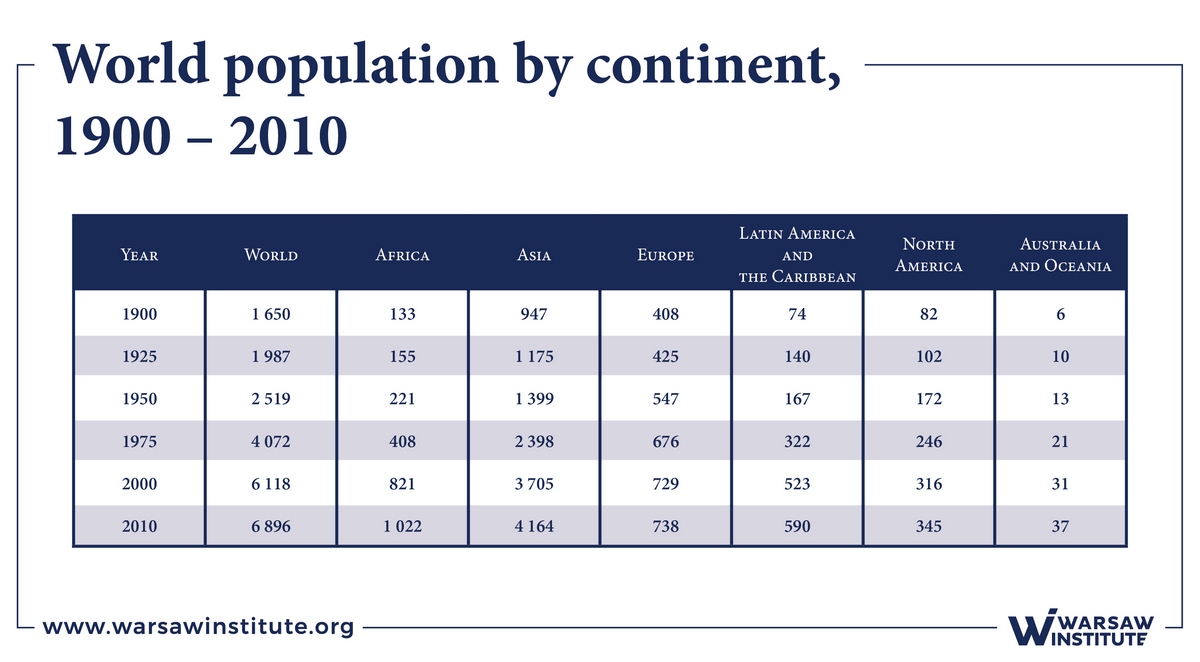 Table 3: World population by continents since XX century.
Table 3: World population by continents since XX century.The major changes in the dynamics of population growth in each continent took place no earlier than in the first half of the last century. In Africa and Europe, population growth has not changed much, while in other parts of the world it has significantly accelerated. The slowdown, or rather the lack of progress in the latter case, among other aspects, not to mention two world wars took their toll on the Old Continent with unprecedented severity. The relative peacefulness that prevailed in Europe in the second half of the 20th century did not reverse this trend. It was clearly the exception as opposed to other areas in the world, which experienced a real demographic boom. From 1950 to 2000, the number of inhabitants increased 370 per cent in Africa, 264 per cent in Asia, 31 per cent in South America, and 180 per cent in North America. The same was true for Australia and Oceania, where the change reached 240 per cent.
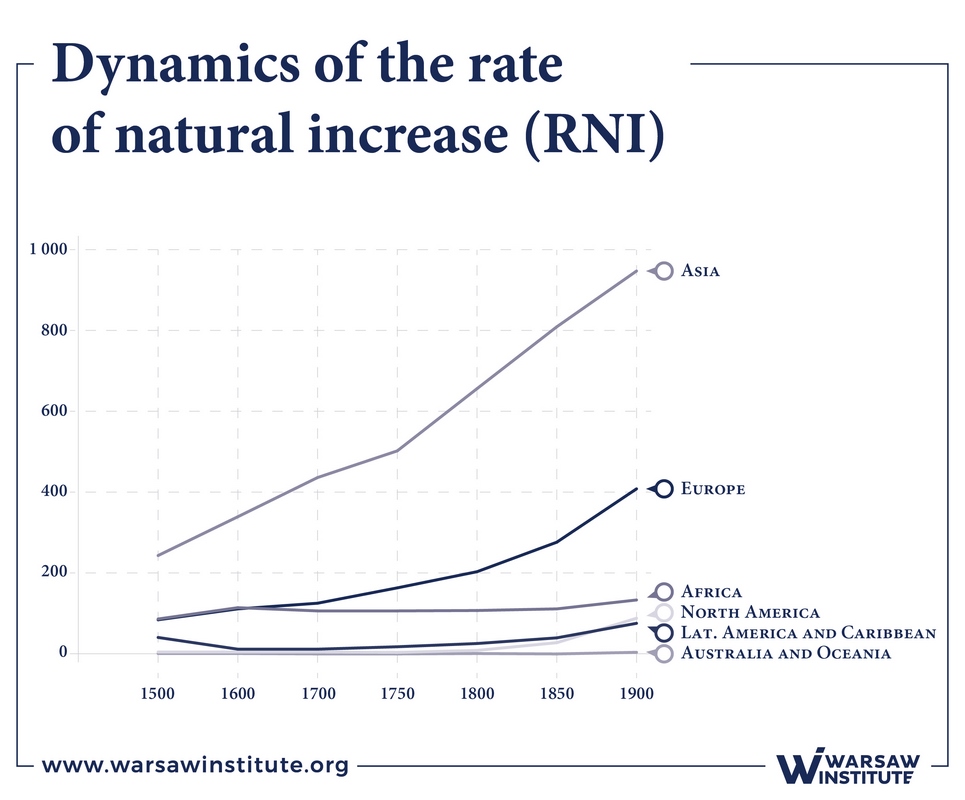 Fig. 1: Natural growth dynamics by continent. Source: Own elaboration
Fig. 1: Natural growth dynamics by continent. Source: Own elaborationFor the purposes of this analysis, it is essential to give priority to the first two cases due to their proximity to the Old Continent. The regions surrounding Europe, i.e. the widely-defined East and North Africa, are of particular importance in this respect.
An interesting example illustrating the demographic changes in this part of the world is Egypt, which has territory on both continents. Just under 100 years ago, there were just over 10 million people living in the former Pharaoh country. In comparison, newly-independent Poland was twice as populated. This proportion was maintained throughout the interwar period.
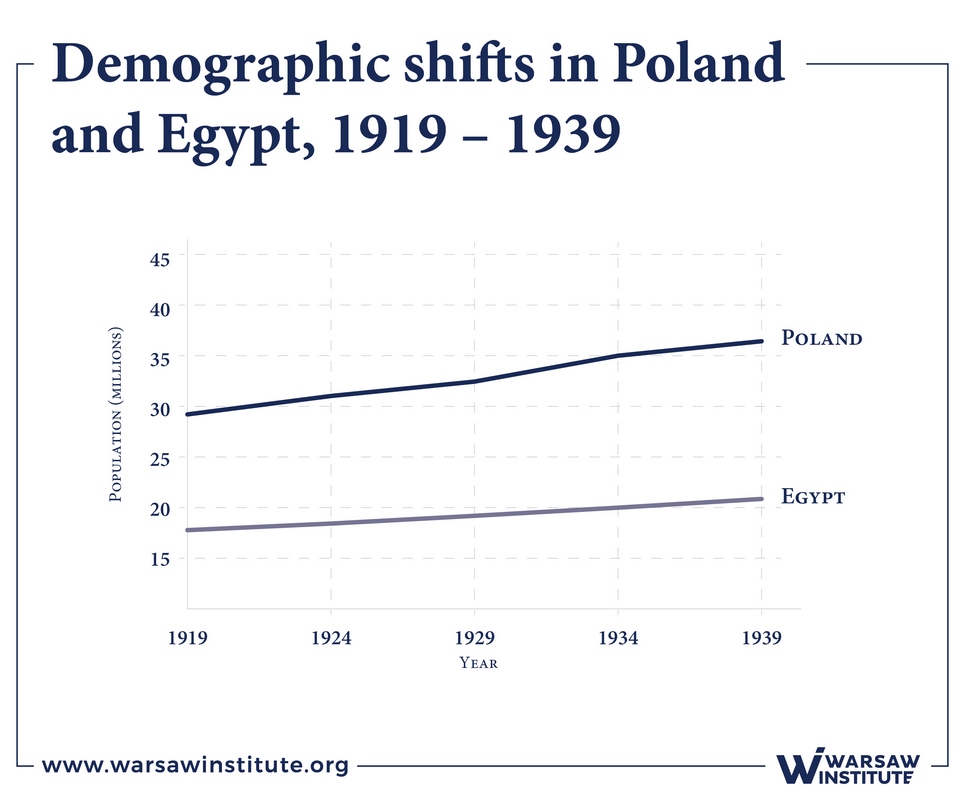 Figures 2 and 3: Demographic changes in Egypt and Poland from 1919 to 1939 and from 1949 to 1979. Source: Own elaboration
Figures 2 and 3: Demographic changes in Egypt and Poland from 1919 to 1939 and from 1949 to 1979. Source: Own elaboration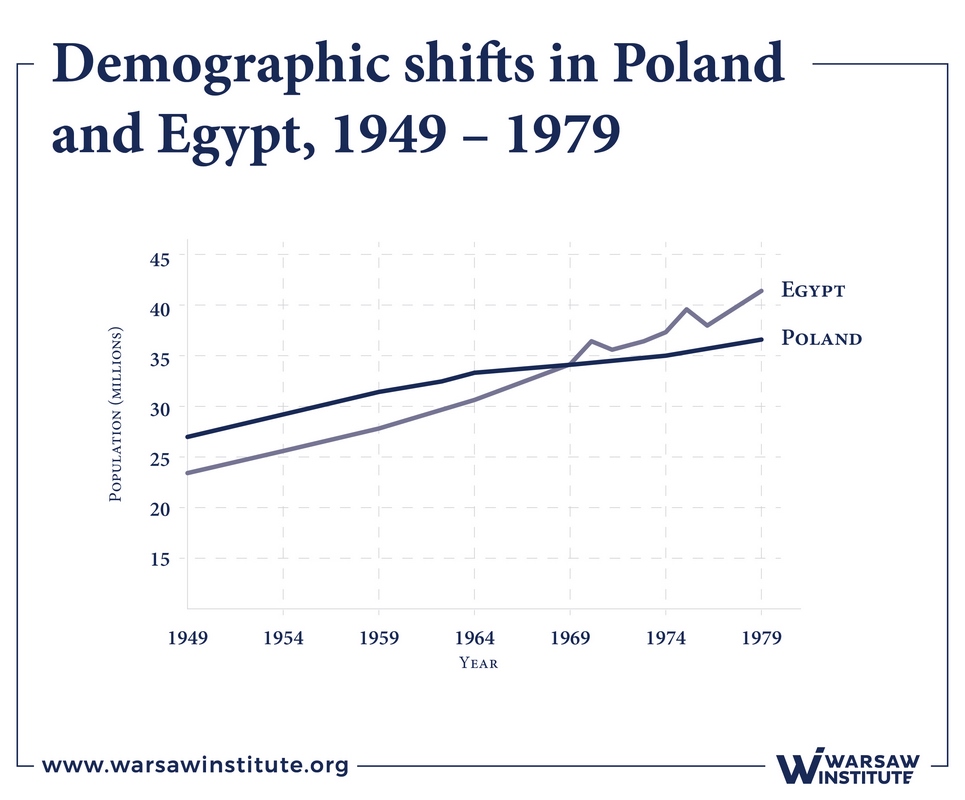
One year before the outbreak of World War II, the population of the Second Republic of Poland amounted to 34.8 million, while that of Egypt – 16.5 million. A slightly faster increase in the population was therefore observed in Poland. Both countries became equal in population about 40 years ago, somewhere at the turn of the 1960s and 1970s. Compared to 1955, Egypt doubled its population in 1979.
This has not yet happened in Poland and there are no signs that it will happen in the coming decades. As a result, at the end of the first decade of the 21st century, Egypt had twice as many citizens as Poland.
The case of Egypt can be considered typical of this part of the world. The reasons for can be found in some cultural proximity of the countries located in this area, which also translated into similarities between the adopted systemic solutions and political and economic development. Examples include Syria, Iraq, and Libya.
All of these countries have at some point embarked on a path of change in the spirit of Arab socialism. For the vast majority of their population, this time was to represent a period of some stability – relative peace conducive to the transformation of their economic structure. Previously treated in the manner typical for colonial areas, they slowly became fully independent entities of growing importance on the international arena. The period of accelerated development, or more precisely the prosperity they entered, was largely due to their general situation. It allowed them to find balance in a bipolar world and take advantage of the rivalry between different antagonized blocks. It is true that they did incur costs in the form of coup d’états caused by external factors. None of them, however, undermined the Nasserian spirit of the Free Officers and the associated ideas of brotherhood and equality. As a result, in most cases, the existing pro-social regulations were not limited, and often, in an attempt to obtain support from society, they were reinforced.
Naturally, there was no lack of flawed reforms or reforms implemented in a way that contradicted the very idea of their implementation. The overall balance of change was positive. The percentage of illiterate people has been decreasing year by year, and the number of graduates has been growing. Access to health care has become widespread, hidden unemployment has fallen, and an increasing number of people no longer need to be involved in traditional gainful employment activities and can be employed in the public sphere or in newly-established or nationalized and expanding companies. This aspect is very important when considering the dynamics of demographic change. It has significantly improved social security, which, due to civilizational and cultural conditions, has allowed many men from the most disadvantaged social groups to start their own families. The only country that has not been involved in an armed conflict and avoided war damage was Egypt.
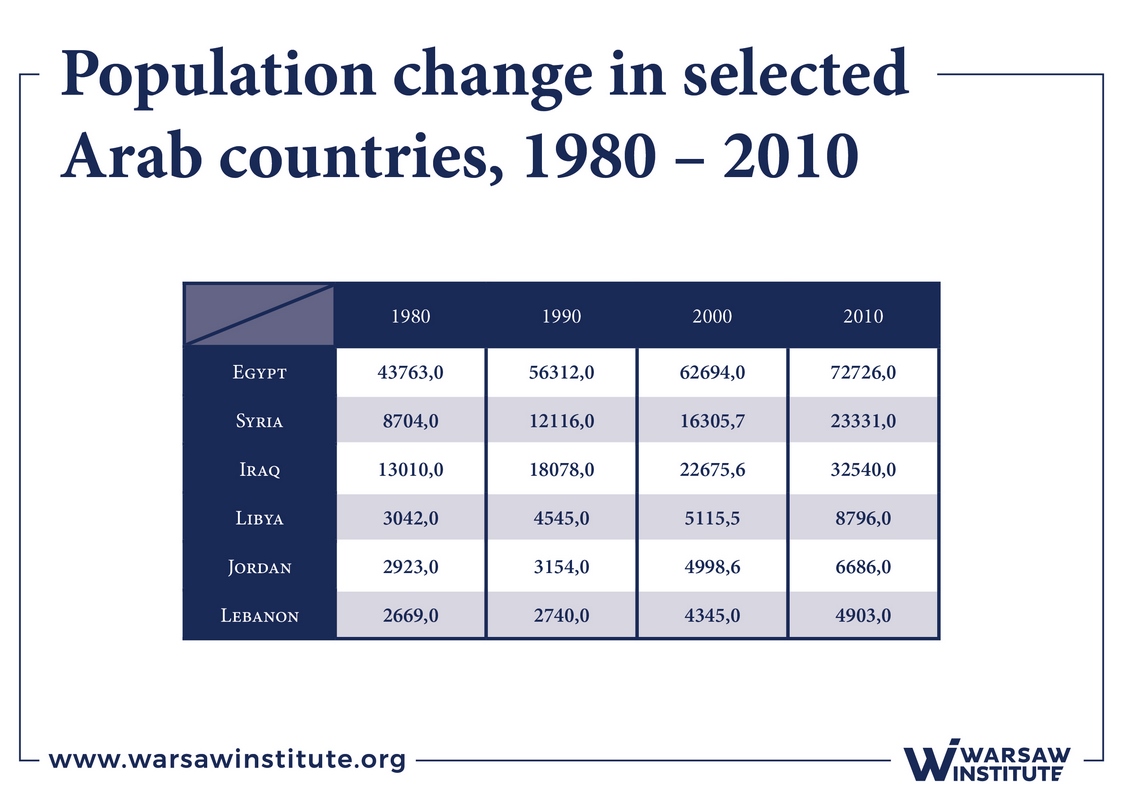 Table 4: Changes in the population of selected Arab countries since 1980
Table 4: Changes in the population of selected Arab countries since 1980Climate change
Dynamic population growth is a factor strongly conducive to migration processes, but it does not trigger them on its own. Usually, they are also stimulated by economic factors. In the case of agrarian societies, changes in the natural environment were decisive. They were also responsible for the following years of crop failure, which caused the displacement of population masses. It is difficult to directly refer to the attitudes specific to this type of community in the context of the processes taking place in the contemporary world as they belong to the past in a model approach and the term itself has historical connotations. Nevertheless, even being a relic of the pre-industrial period, they still remain a significant factor. This is particularly the case in agricultural regions, where land cultivation and animal farming remain important economic sources for a high percentage of their population.
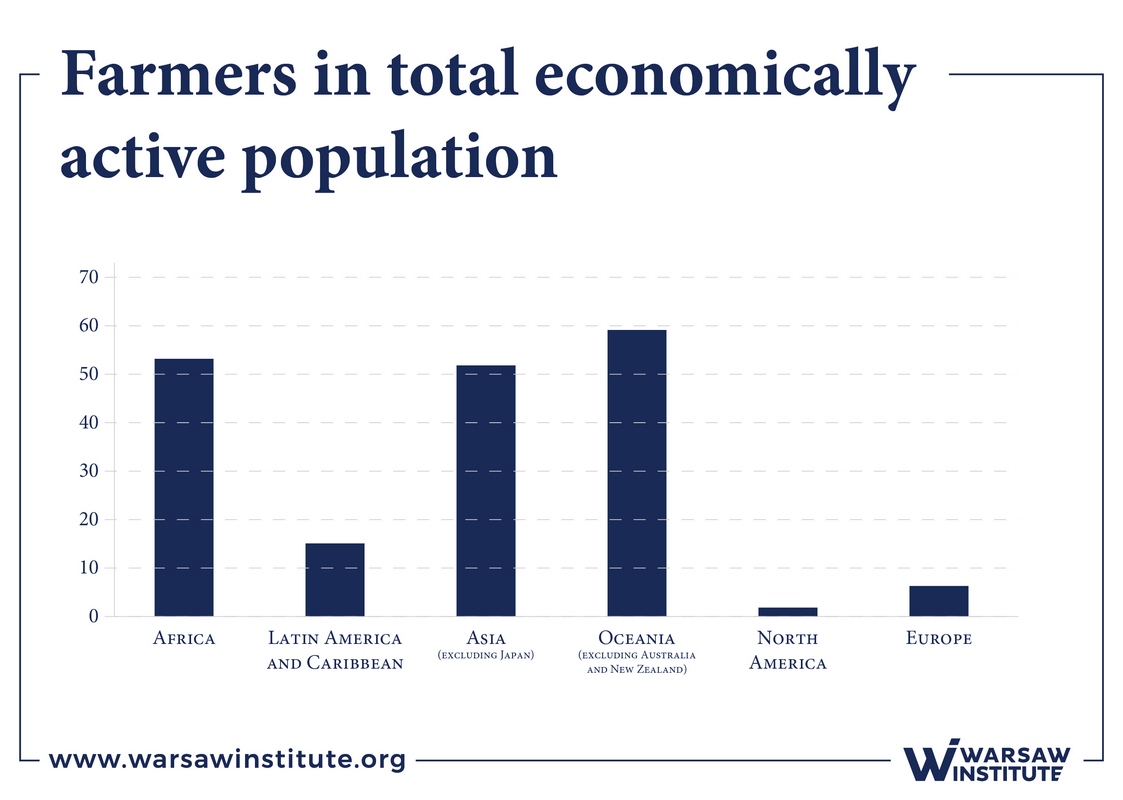 Figure 4: Percentage of the population benefiting from agricultural work
Figure 4: Percentage of the population benefiting from agricultural workHowever, it refers not only to those for whom working on a farm is a basic activity, but also to a much wider group of people who, thanks to it, their living conditions improve. The total number of such farms in the world is estimated at 570 million, 74% of which are located in Asia, and only 4% in the Middle East – this is the equivalent to almost 23 million farms. Given the size of the local population of 437 million and the average family size, this is something that cannot be ignored.
What is more, the increase in average annual temperatures, often with values that are physically completely imperceptible to inhabitants, does not remain indifferent to the state of the natural environment. The decrease in groundwater level is reflected in the steppe formation or even desertification of areas cultivated until recently. The decrease in the area of land suitable for cultivation has become a common phenomenon in the Near East and Middle East over the last two decades. In the case of North Africa, this is particularly strong in areas of Libya where, since the fall of al-Gaddafi, all efforts and initiatives to halt erosion and depletion of agricultural land have all but stopped. The massive Great Man-Made River project, which is of sizable importance to the region as a whole, has also been hit hard, and whose infrastructure was one of the first targets of bombings[1].
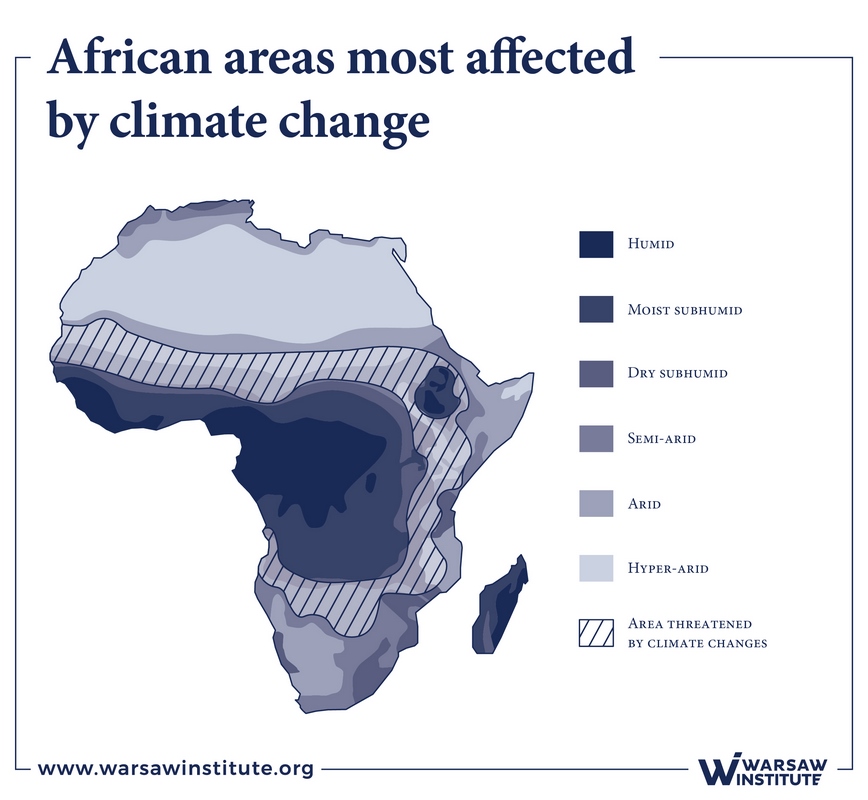 Figure 5: Areas most at risk from climate change in Africa
Figure 5: Areas most at risk from climate change in AfricaIn addition, climate change in sub-Saharan areas reinforces the likelihood of such a scenario. The systematic rise in temperatures and improvement of living conditions have resulted in successive waves of refugees from these areas. They leave their home countries and come to the north to look for better lives. As in the already mentioned internal population flows observed in Libya, Egypt and the Maghreb, these processes should be treated as natural trends in population and settlement movements. The only difference is in their intensity and size.
Political instability and land reclamation in Iraq and Syria
The process of desertification of agriculturally-used areas took place in Mashriq, and has been most severely reflected in Mesopotamia, a region traditionally considered to be the region’s breadbasket.
Irrigation investment in Iraq has stopped since the early 1980s. The war in Iran proved to be an extremely costly conflict. It has absorbed not only the surpluses and financial reserves of the state but has also caused indebtedness. The funds received were not always sufficient even for necessary repairs of the irrigation canal system. The occupation of Kuwait, which was supposed to provide the Iraqi economy with modernization and the population with prosperity, led to effects that were quite different from what was intended. The military intervention against Iraq in 1991, followed by international isolation and restrictive trade restrictions, limited not only the flow of money but also of technology and specialists. As a result, renovation and engineering work that could even partially mitigate the effects of climate change and desert expansion has been undertaken on a disproportionate scale compared to the needs. The next war campaign in 2003 was also not favorable for such projects. Only after 2004 was some progress made in this area, which involved the creation of a fund for the reconstruction of the Iraqi economy deprived of investment as a result of a US embargo and wars. Critical infrastructure was at the forefront. The progress of the work carried out, to a large extent, by and with Western companies has been significant, although it has been effectively slowed down by corruption, bureaucracy and political instability. The loss of control over the latter and the emergence of ISIS have again shifted the burden of the state’s tasks to objectives other than the fight against the desert and the restoration of all its lands.
After attempts by Western countries to use the so-called Arab Spring movement to overthrow the Bashar al-Assad regime, Syria’s political and economic instability continued. The areas on the banks of the Euphrates have been brought under the control of a hostile power in Damascus. All the work to stop the soil from drying up and the desert from expanding has stopped. Even if the scope and scale of this work had been decidedly inadequate before, the economic and social dimension of this work could not be overestimated. After 2011, the situation in this field has become even more dramatic. There is also little prospect of its improvement in the coming years. This applies to both aspects: climate change and the dynamics of political processes in the Middle East. In the first case, the nature of the changes is irreversible, and in the second, the conflict of interests of the regional powers and the lack of will on the part of the major international players who support them make it impossible to put an end to the ongoing armed conflicts.
Conclusion
Contemporary Europe owes its current shape to the historical processes that have formed it, among which successive waves of settlements on its territory have played a key role in its cultural and civilization dimensions. Antiquity appears here to be the period of its settlement, interrupted in the areas to the west of the Danube and Rhine lines by the rise of the Roman Empire, while the Middle Ages – as the declining period of migration of peoples and the time of the creation of modern states. In this respect, modern history can be seen as a period of migration from Europe of peoples, whose representatives, with a few exceptions, used Indo-European languages to the “new world”. They may also be regarded as a time of colonization of the Old Continent by groups of nations now associated with Asia and Africa.
As in the past, the settlement of people from these nations was met with resistance and opposition of societies, which, due to the much earlier settlement of areas, acted as their historical owners. This phenomenon is as natural as migration itself.
What is important and worth emphasizing, is that armed conflicts, demographic processes and climate change, which are now responsible for the current wave of migration, were also the determinants of past migrations. The phenomenon of modern processes is participation in generating migration by the society living in the areas constituting the settlement target. This applies to both political and natural dimensions.
Bibliography:
Monographs:
- Batatu H., The old social classes and the revolutionary movements of Iraq, London 2004.
- Brylew M., Iraq 2003–2005, Stabilizacja sytuacji społeczno-politycznej i tranzycja władzy, Toruń 2011,
- Farouk-Sluglett M., Sluglett P., Iraq since 1958 – from revolution to dictatorship, London 2003.
- Historia Polski w liczbach. Państwo i społeczeństwo. 1, Warszawa 2003.
- Korany B., Hillal Dessouki A. E., Foreign Policy Approaches and Arab Countries, Warsaw 2003.
- Korany B., Hillal Dessouki A. E., Foreign Policy Approaches and Arab Countries: a Critical Evaluation and the Alternative Framework, [in:] The Foreign Policies of Arab States. The Challenge of Globalization, Cairo 2010.
- Marr P., The modern history of Iraq, Cambridge 2003.
- Meddison A., The World Economy A MILLENNIAL PERSPECTIVE, OECE, Paris 2001.
- Nasser A. His Life and Times, Cairo 2005.
- Tripp C., A History of Iraq, Cambridge 2002.
- Wójcik Z., Historia powszechna wieku XVI–XVII, Warsaw 1998.
- Zdanowski J., History of the Middle East in the 20th Century, Wrocław 2010.
- Zidan A. M., The Impact of The Great Man Made River Project on Libya’s Agricultural Activities and the Environment, Universiti Teknologi Malaysia 2007.
Academic Journals:
- Beine M., Parsons Ch., Climatic Factors as Determinants of International Migration, “Scandinavian Journal of Economics”, Volume 117, Issue 2, April 2015.
- Lelieveld J., Proestos Y., Hadjinicolaou P., Tanarhte M., Tyrlis E., Zittis G., Strongly increasing heat extremes in the Middle East and North Africa (MENA) in the 21st century, Climatic Change, July 2016, Vol. 137, Issue 1–2.
- Lowder S. K., Skoet J., Raney T., The Number, Size, and Distribution of Farms, Smallholder Farms, and Family Farms Worldwide, FAO – World Development Vol. 87, Rome 2016.
Reports and studies (Internet):
- Beauchemin C., Family Migration from Sub-Saharan Africa to Europe, https://www.oecd.org/els/mig/Beauchemin.pdf (DOA 15 December 2017).
- Hass H de., Irregular Migration from West Africa to the Maghreb and the European Union: An Overview of Recent Trends, http://www.unhcr.org/49e479ca0.pdf (DOA 19 December 2017).
- http://www.momagri.org/UK/agriculture-s-key-figures/With-close-to-40-%25-of-the-global-workforce-agriculture-is-the-world-s-largest-provider-of-jobs-_1066.html (DOA 10 December 2017).
- http://www.populstat.info/Africa/egyptc.htm (DOA 10 December 2017).
- http://www.populstat.info/Africa/egyptc.htm (DOA 10 December 2017).
- http://www.populstat.info/Africa/libyac.htm (DOA 10 December 2017).
- http://www.populstat.info/Asia/iraqc.htm (DOA 10 December 2017).
- http://www.populstat.info/Asia/syriac.htm (DOA 10 December 2017).
- Migration in North African Development Policies and Strategies A comparative analysis, Rabat 2014, /https://www.uneca.org/sites/default/files/PublicationFiles/problematique_de_la_migration_eng.pdf (DOA 10 December 2017).
- NATO bombs the Great Man-Made River, https://humanrightsinvestigations.org/2011/07/27/great-man-made-river-nato-bombs/ (DOA 10 December 2017).
- Rapsomanikis G.The economic lives of smallholder farmers An analysis based on household data from nine countries, Raport -Food and Agriculture Organization of the United Nations Rome, 2015 – http://www.fao.org/3/a-i5251e.pdf (DOA 11 December 2017).
- The World at Six Billion – United Nations Population Division http://www.un.org/esa/population/publications/sixbillion/sixbillion.htm (DOA 10 November 2017)
- The World Bank – Population Middle East & North Africa – https://data.worldbank.org/region/middle-east-and-north-africa (DOA 12 December 2017).
- World Population Historical Estimates of World Population, https://www.census.gov/population/international/data/worldpop/table_history.php (DOA 15 October 2017)
[1] NATO bombs the Great Man-Made River, https://humanrightsinvestigations.org/2011/07/27/great-man-made-river-nato-bombs/, retrieved 10 December 2018.
All texts published by the Warsaw Institute Foundation may be disseminated on the condition that their origin is credited. Images may not be used without permission.














